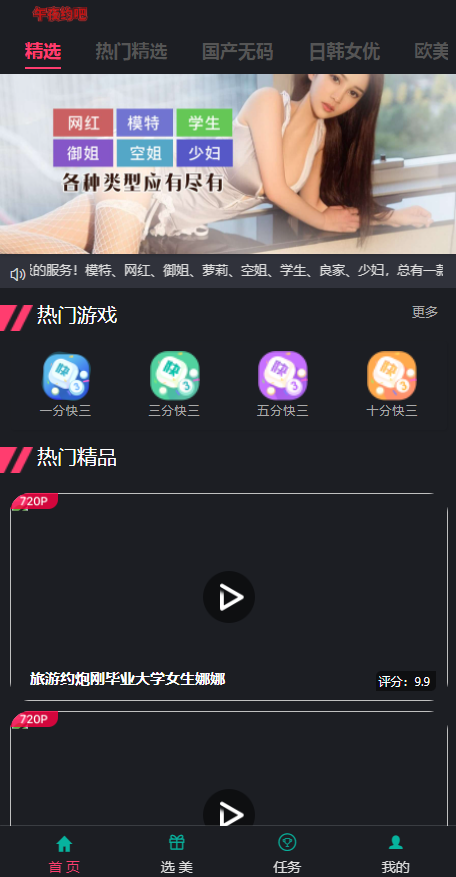如何选择【谷歌马甲包】类别
Choosing the right category for a 【谷歌马甲包】 is crucial for ensuring its success on the Google Play Store. This decision directly impacts how your app is discovered, downloaded, and rated. To help you make the best choice, this article provides a comprehensive guide covering the importance of categories, the factors to consider, and the strategies to optimize your app's visibility.
Why Categories Matter for a 【谷歌马甲包】
Categories are fundamental in organizing the Google Play Store, allowing users to navigate and discover apps tailored to their needs. Here’s why selecting the right category is essential:
- Improved Discoverability: Apps placed in the appropriate category are more likely to be found by users searching for related content.
- Higher Conversion Rates: Users are more inclined to download an app when they find it in a category that matches their needs.
- Better User Retention: Apps that meet user expectations for a given category often see higher engagement and retention rates.
- Compliance with Google’s Policies: Incorrect categorization could lead to violations of Google’s terms, impacting your app’s visibility or even resulting in removal.
Key Considerations for Choosing a 【谷歌马甲包】 Category
1. Understand Your App’s Core Functionality
Every app has a primary purpose, and your selected category should reflect this. For instance:
- A fitness tracking app should belong to the “Health & Fitness” category.
- A puzzle-solving game would fit into the “Puzzle” category under Games.
To determine your app’s primary functionality:
- List all the app’s features.
- Identify its main user problem or goal.
- Consider which category aligns best with the app’s central purpose.
2. Research Competitors
Analyzing your competitors can provide insights into effective categorization. To do this:
- Search for apps similar to your 【谷歌马甲包】.
- Note their selected categories.
- Assess their reviews and ratings to understand how well they perform in those categories.
3. Align with User Intent
Think about why users would download your app. Are they looking for entertainment, education, or utility? For example:
- Educational apps should target categories like “Education” or “Books & Reference.”
- Gaming apps should explore subcategories like “Action,” “Adventure,” or “Casual.”
4. Choose a Secondary Category (If Applicable)
Google allows apps to appear in two categories if they qualify under multiple types. This secondary placement can increase your app's exposure. For example:
- A fitness app with meal-planning features could be listed under both “Health & Fitness” and “Food & Drink.”
- A game with a strong narrative might fit under “Adventure” and “Role Playing.”
5. Stay Updated with Google’s Guidelines
Google occasionally updates its category definitions and policies. Regularly reviewing these guidelines ensures compliance and helps you avoid penalties.
Strategies for Optimizing Your 【谷歌马甲包】 Visibility
1. Leverage Keywords
Incorporating relevant keywords into your app’s description, title, and metadata can boost its visibility within a category. For example:
- Use terms like “free,” “new,” or “2024” for trending appeal.
- Focus on niche keywords that align with your category, such as “home workout” for fitness apps.
2. Optimize App Icons and Screenshots
A visually appealing icon and professional screenshots tailored to your chosen category can significantly impact user engagement. Ensure your visuals:
- Reflect your app’s purpose.
- Appeal to the target audience for the selected category.
3. Gather Positive Reviews and Ratings
Apps with higher ratings and more positive reviews tend to rank better within their categories. Encourage users to leave feedback by:
- Prompting reviews after successful interactions.
- Responding to user concerns to improve satisfaction.
4. Utilize Localization
If your app targets multiple regions, ensure its description and metadata are localized for each market. This helps it perform better in category rankings globally.
5. Experiment with Subcategories
Some primary categories offer subcategories that can refine your app’s placement. For example:
- Under “Games,” you could select subcategories like “Simulation” or “Strategy” to target niche audiences.
Common Mistakes to Avoid When Selecting a 【谷歌马甲包】 Category
1. Overlooking User Expectations
Placing an app in a category that doesn’t align with its functionality can lead to negative reviews and high uninstall rates.
2. Ignoring Subcategories
Failing to explore subcategory options might result in missed opportunities to reach a more specific audience.
3. Neglecting Data Analysis
Relying solely on intuition without analyzing competitor performance and user feedback can lead to poor category selection.
Tools to Help You Choose the Right Category for Your 【谷歌马甲包】
- Google Play Console: Offers insights into category trends and competitor analysis.
- App Store Optimization (ASO) Tools: Platforms like Sensor Tower or App Annie can provide data-driven suggestions for category placement.
- Google Trends: Helps you understand user search behavior related to your app.
Conclusion
Selecting the right category for your 【谷歌马甲包】 is more than just a box to check during the app submission process—it’s a strategic decision that affects your app's visibility, downloads, and user engagement. By understanding your app’s core functionality, researching competitors, and aligning with user intent, you can make informed choices that maximize your app's success on the Google Play Store. Combine this with optimization strategies, and your app will be well-positioned to thrive in its chosen category.

